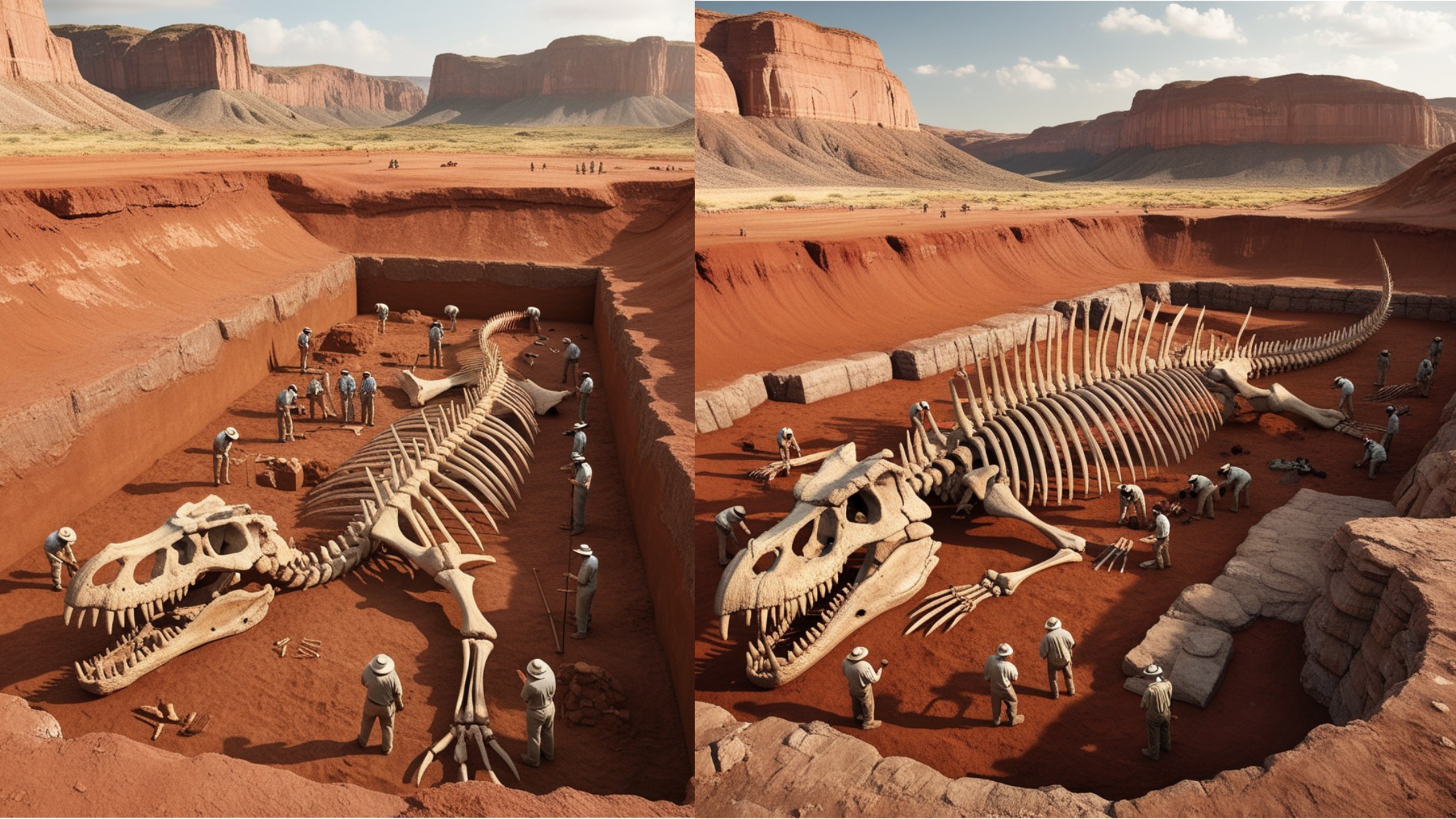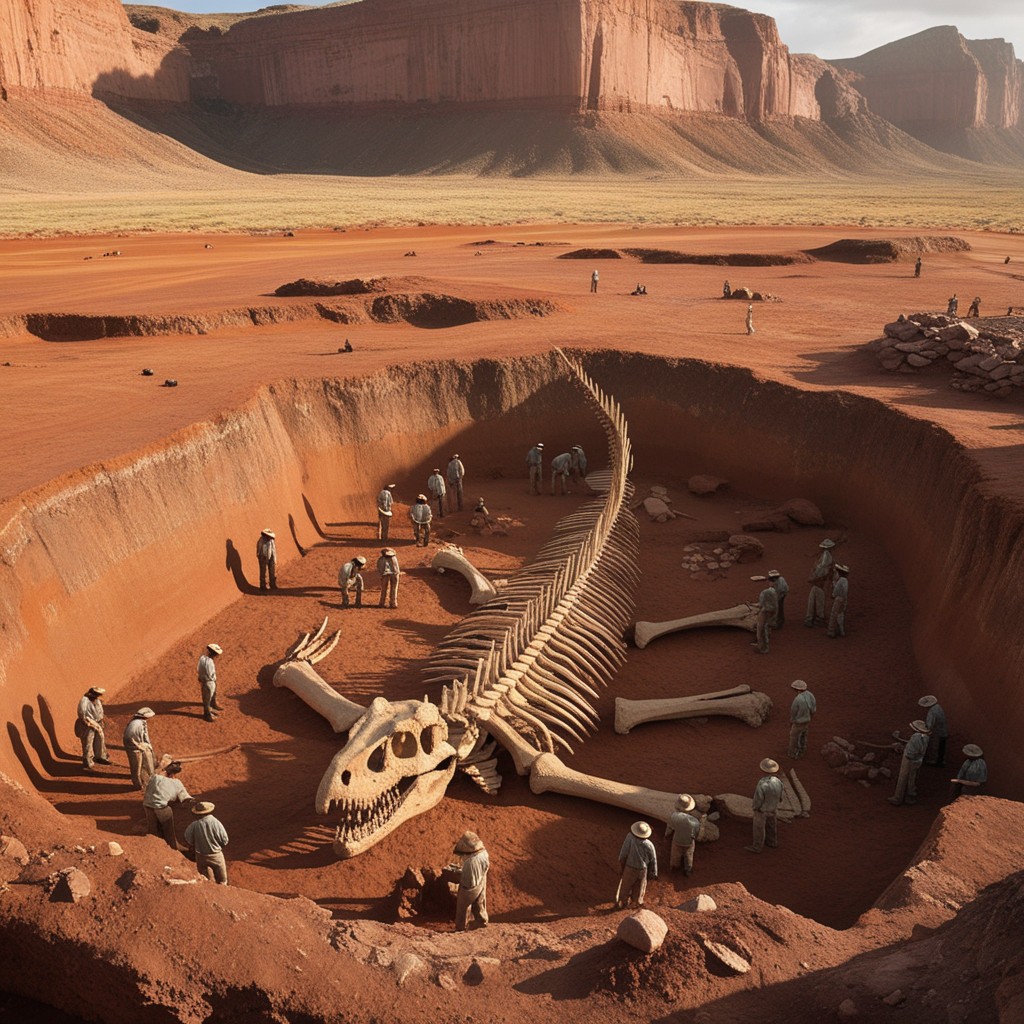
Spectacular Dragon Fossil Unearthed in China: A Stunning Archaeological Discovery
 In a groundbreaking discovery that has captivated the archaeological community worldwide, a Chinese expedition team has unearthed an enormous fossil resembling the legendary dragon, sparking fascination and debates among scientists and enthusiasts alike. This extraordinary find, located in a remote mountainous region of China, could reshape our understanding of ancient creatures, myths, and the origins of dragon folklore in Chinese culture.
In a groundbreaking discovery that has captivated the archaeological community worldwide, a Chinese expedition team has unearthed an enormous fossil resembling the legendary dragon, sparking fascination and debates among scientists and enthusiasts alike. This extraordinary find, located in a remote mountainous region of China, could reshape our understanding of ancient creatures, myths, and the origins of dragon folklore in Chinese culture.

The fossil, measuring an impressive length and possessing a fierce, spiked skeletal structure, was carefully uncovered by archaeologists after months of excavation. The skeleton’s distinctive features, including an elongated spine, razor-sharp teeth, and formidable ribcage, closely resemble the descriptions of dragons found in various ancient texts and folklore. These characteristics, combined with its enormous size, give the fossil an almost mythical aura, leading many to speculate on its possible connection to the legendary creatures celebrated in Chinese history.
Discovery and Excavation Process
The excavation site, located in an area known for its rich fossil deposits, was selected after initial studies indicated unusual geological formations beneath the surface. After weeks of meticulous digging and analysis, the team began to uncover fragments of what appeared to be a massive skeleton. As more sections were exposed, the true scope of the discovery became apparent, revealing a creature that closely aligns with depictions of dragons, especially those in ancient Chinese art and literature.
“This discovery is nothing short of remarkable,” said Dr. Liu Chen, the lead paleontologist on the project. “While it is too early to determine the exact species or the age of this fossil, the skeletal structure bears a striking resemblance to the legendary dragon. This find could provide crucial insights into the origins of dragon mythology and how such creatures were perceived by ancient civilizations.”
Significance in Chinese Culture
Dragons hold a revered place in Chinese culture, symbolizing power, strength, and good fortune. Unlike in Western mythology, where dragons are often seen as menacing beasts, Chinese dragons are traditionally seen as benevolent creatures associated with water, rivers, and agriculture. This fossil could add a new layer to the understanding of how dragons became embedded in the cultural consciousness of ancient China.
While the notion of dragons as mythical creatures has been widely accepted, this discovery raises the intriguing question of whether ancient humans might have encountered such massive reptiles, inspiring the legends that continue to thrive to this day.
Next Steps in Research
The team plans to conduct extensive tests on the fossil to determine its age, species, and potential evolutionary link to known prehistoric creatures. Advanced carbon dating and DNA analysis, if possible, will be conducted to gather more data. Researchers are also exploring the possibility of it being a previously unknown dinosaur species that may have inspired the concept of dragons.
The Chinese government has expressed interest in preserving the site, potentially opening it up as an educational and tourist location once excavation work is complete. This would allow the public to witness the spectacle firsthand and deepen their understanding of China’s rich paleontological heritage.
Global Impact on Science and Mythology
This discovery has ignited a global discussion among scientists, historians, and cultural scholars, who see it as an opportunity to bridge science and mythology. While many are excited about the potential scientific advancements, others are eager to explore the cultural implications and the possibility that dragon myths may have had some basis in real encounters with large prehistoric reptiles.
As the research unfolds, this remarkable discovery is expected to yield new insights into the origins of dragon legends, the biodiversity of ancient China, and the complex relationship between science and myth. For now, the world watches in anticipation as China’s "dragon fossil" continues to mesmerize the archaeological community and beyond.
Conclusion
The uncovering of this dragon-like fossil stands as one of the most extraordinary archaeological discoveries of recent years. Whether it turns out to be an ancient species of dinosaur or a creature entirely unknown to science, this find promises to deepen humanity’s understanding of the past while stirring the imagination about the myths and creatures that once roamed the earth.
Copyright © 2025 Amazing Stories. All rights reserved.